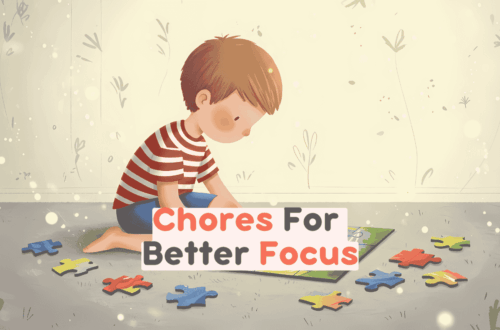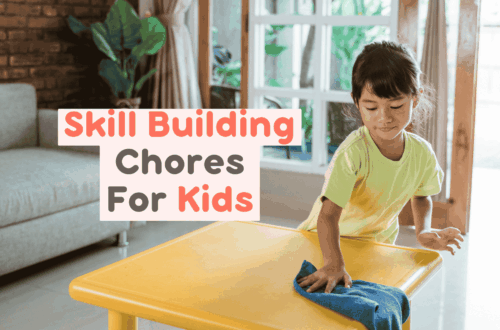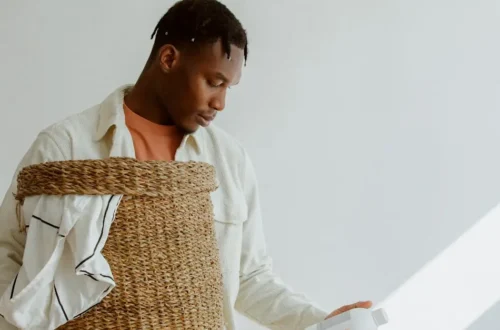Introduction: Why Responsibility Starts at Home
Every parent wants their child to grow into a responsible, capable adult. But responsibility isn’t taught in a single lesson – it’s built day by day, through consistent habits. One of the simplest and most effective ways to build responsibility in children? Chores.
Chores give kids a chance to contribute, learn accountability, and see the direct connection between effort and results. Research from the University of Minnesota found that kids who start chores early are more likely to develop strong problem-solving skills, self-discipline, and independence as they grow.
This guide will show you how to use chores as a responsibility-building tool – with age-appropriate chore examples for kids, strategies to make chores engaging, and tips to avoid common mistakes.
👉 Shortcut: [Download our free printable chore chart bundle (ages 2-18)] to start teaching responsibility today.
1. Why Chores Teach Responsibility
- Consistency Builds Habits: Daily chores teach kids that responsibility isn’t optional.
- Effort → Results: Kids see how their actions (taking out trash, folding laundry) impact family life.
- Ownership: When kids have tasks that belong to them, they develop pride in doing them well.
- Accountability: Chores create natural consequences. If laundry isn’t done, clothes aren’t clean.
💡 Tip: Frame chores as family contributions, not punishments.
2. The Psychology Behind Responsibility
- Modeling Behavior: Kids imitate adults. If you treat chores as normal, they will too.
- Positive Reinforcement: Rewards build motivation and consistency.
- Gradual Autonomy: Giving kids control over tasks builds independence.
A Harvard study on household responsibilities found that kids who do chores regularly are more resilient and better prepared for adulthood.
3. Age-Appropriate Chores That Build Responsibility
Toddlers (Ages 2-3)
- Pick up toys with guidance.
- Put dirty clothes in a basket.
- Wipe small spills.
💡 Responsibility lesson: Even the smallest tasks matter.
Preschoolers (Ages 4-5)
- Set the table.
- Water plants.
- Sort laundry by colors.
💡 Responsibility lesson: Helping keeps the household running.
Early Elementary (Ages 6-8)
- Sweep or vacuum small areas.
- Fold laundry.
- Feed and care for pets.
💡 Responsibility lesson: Independence grows with practice.
Preteens (Ages 9-12)
- Cook simple meals.
- Do laundry from start to finish.
- Babysit siblings briefly.
💡 Responsibility lesson: Consistency leads to trust.
Teenagers (Ages 13-18)
- Grocery shopping with a list.
- Yard work (mowing, raking).
- Managing their own laundry.
💡 Responsibility lesson: Adult skills = independence for life.
👉 Download: [Complete Chore Chart Bundle (ages 2-18)]
4. Tools That Make Responsibility Stick
Paper Charts
Simple for toddlers and preschoolers. Visual and rewarding.
Magnetic/Dry-Erase Boards
Reusable, interactive, good for elementary kids.
Digital Apps (Kikaroo)
Digital apps like the Kikaroo chore tracker app for kids are best for long-term responsibility.
- Assign chores instantly.
- Track progress without nagging.
- Reward kids digitally.
💡 Think of Kikaroo as a responsibility coach that grows with your child.
5. Common Mistakes Parents Make
- Nagging instead of guiding → Turns chores into battles.
- Expecting perfection → Effort matters more than flawless results.
- Inconsistency → Skipping chores teaches kids they’re optional.
- Using chores as punishment → Creates resentment instead of responsibility.
6. FAQs About Teaching Responsibility Through Chores
Q: What age should kids start chores?
As early as 2-3 years old. Even toddlers can start simple tasks.
Q: Should I pay my child for chores?
Basic chores should be expected. Extra tasks can be tied to allowance.
Q: What if my child refuses?
Stay calm and consistent. Use natural consequences + positive reinforcement.
Conclusion: Start Today, Build Habits for Tomorrow
Responsibility isn’t taught in a lecture – it’s built in small, daily actions. Chores are the perfect training ground for kids to learn accountability, teamwork, and independence.
Start today with one small, age-appropriate chore. Use a printable chart or the Kikaroo app to track progress automatically. Over time, you’ll see chores evolve from battles into habits – and responsibility become second nature.
👉 Download the Kikaroo app and unlock built-in age-based chore templates.

 Home
Home Features
Features Testimonials
Testimonials Downloads
Downloads FAQ
FAQ Blog
Blog








